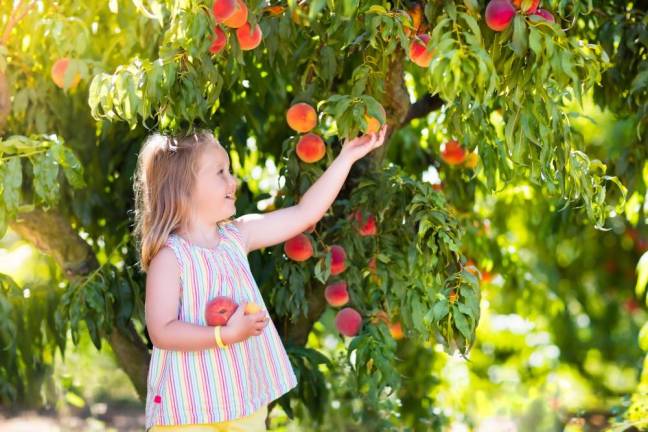I planted my first peach tree last June, five months before Pantone named Peach Fuzz the 2024 color of the year. How serendipitous!
But for me, it’s not about the trend but rather the sweet, juicy fruit that (I hope) will drip down to my elbows when I take my first bite.
If you’d like to jump on the peachy bandwagon in your garden this season, first familiarize yourself with your horticultural zone to ensure you select a variety of peach tree that’s appropriate for your region.
Armed with that knowledge, research suitable varieties, and decide which types among them you can and would like to grow:
Yellow-fleshed peaches have a balanced, sweet-acidic flavor profile.
White-fleshed peaches are generally softer and sweeter.
Donut peaches, sometimes called Saturn, are flat, disc-shaped fruits with sweet, white or yellow flesh.
Within those categories are the freestone and clingstone types. Freestone fruits tend to be larger, firmer and less juicy, and their center pits, or stones, are not attached to their flesh. Clingstones are more succulent, sweeter and retain their texture better when cooked or canned, but their flesh is firmly connected to the pit, making preparing them for processing more labor-intensive. Semi-clingstone hybrids offer the sweet juiciness of clingstones with easy-to-remove pits.
For my garden, I selected a dwarf Redhaven peach, which produces medium-size freestone fruits with creamy-textured yellow flesh and nearly fuzzless skin. It’s also resistant to leaf spot, and tops out at just 15 feet tall, which is perfect for the small garden that borders my deck.
How to grow a peach tree
Select a spot that receives at least six to eight hours of sunlight daily and test the soil’s pH. Peaches require a reading between 6.5 and 7.0. If your soil is outside of those parameters, amend it as needed.
Peach trees also need well-draining, fertile soil. A healthy dose of compost, incorporated into the bed before planting, will improve the drainage of clay, increase the water-holding capacity of sand and add beneficial nutrients.
When planting your tree in early spring, cut the leader, the central stem at the top of the tree, back to 8 inches above the first side shoot, then trim all remaining shoots to just two buds. If any side shoots are growing from the bottom 18 inches of the plant, remove them, and continue to do this during the tree’s first year as new shoots appear on that lower portion of the tree.
In the absence of rainfall, water the tree deeply once a week during its first year to support its establishing root system. In subsequent years, the tree may get by on rainfall alone. Use your judgment according to your climate and weather conditions, but be careful not to overwater.
Most peaches are self-pollinating, which means they don’t require another peach tree nearby to set fruit. Still, they produce more fruit when planted with a bedmate and do benefit from hand pollination in spring, although this isn’t necessary.
Prune back new stems yearly when the tree is in flower to ensure vigorous new growth. No worries about removing blossoms, as peaches produce fruit on year-old wood.
Future care
In late spring of the second year, cut back the central leader to just above the first wide-angled branch. Select 3-5 scaffold limbs (those that give the tree its vaselike shape) to keep, and remove the others.
Removing old, gray branches, which will not produce fruit, will allow more sunlight into the center of the tree and increase air circulation to discourage disease.
Following package dosage recommendations, apply a 5-10-5 or 10-10-10 fertilizer annually in early spring.
It can take two to four years for trees to fruit, but the wait will be worth it. Peach Melba, anyone?
